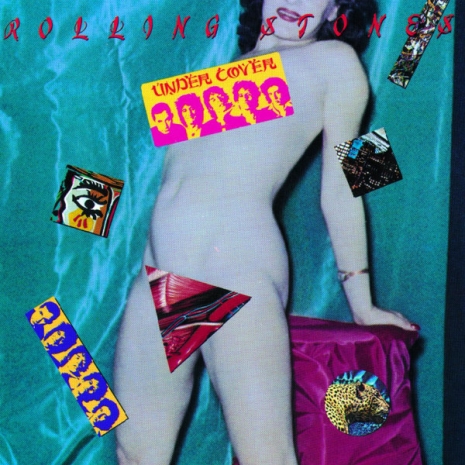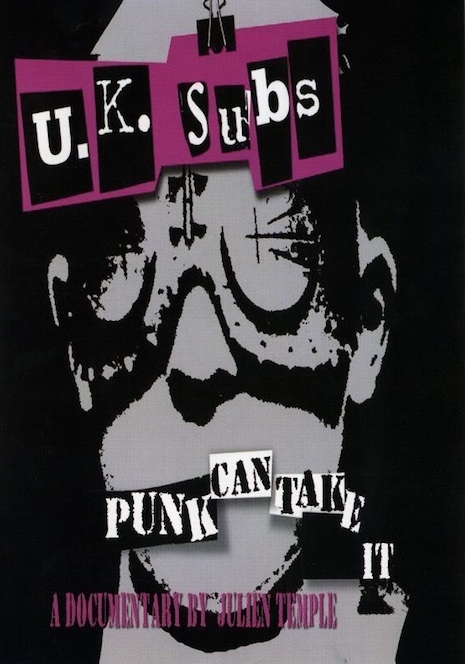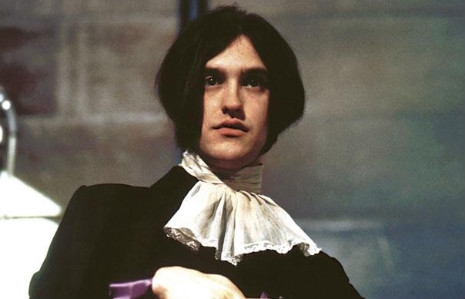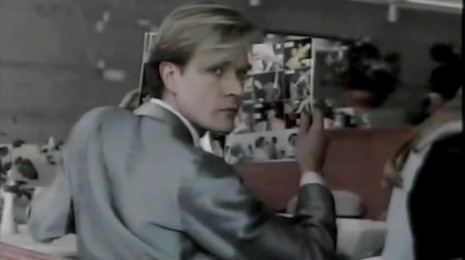
How to stay relevant. It’s a question we all face at some point in life. Mick Jagger was thinking about staying relevant. It was 1983. Punk had come and gone. New Wave was still a thing. Electronica and the New Romantics were still fashionable. Where did a rock ‘n’ roll band like the Stones fit into the mix? Jagger was going through what Keith Richards calls “Lead Vocalist Syndrome.” The point where a band’s singer thinks he/she is bigger, better, and more important than the rest of the group.
Richards had quit heroin. He was clean. After years of fucking around, Richards was back and wanted to take up his fair share of the burden Jagger had been carrying. But Jagger had control of the Rolling Stones and wasn’t going to give Keith an inch.
“Shut up, Keith, that’s an idiotic idea,” was how Jagger dismissed Richards.
To keep relevant, Jagger was checking out the competition. He wanted to know what Bowie was doing, what Rod Stewart was doing, what was the latest tune played on the dancefloor at Studio 54, and which bands were snapping at their heels. He was chasing his own tail.
The best way to stay relevant is to be and do.
Jagger and Richards wrote their first song on a kitchen table. They didn’t care what other people thought or who they sounded like, it was their song—that was all that mattered. Now, the relationship between Jagger and Richards was fractious. It was falling apart. Jagger had control and he was taking the Stones where he wanted.
Yet, checking out the opposition, chasing the trends meant sometimes Jagger got it right. He was and still is a shrewd businessman—let’s not forget, he had been a student at the London School of Economics. He had also been very successful in taking the Stones in unlikely directions, like that time he pulled them into disco music with “Miss You.” But sometimes his ideas were as popular as that time Family Guy replaced Brian with the ghastly mutt, Vinny. Still, Jagger was always open to suggestions, always looking for something new, always wanting to be at the front of the crowd.
Jagger had read William Burroughs’ book Cities of the Red Night. It was the book everyone was supposed to be reading. It had received, at that point, the best reviews of Burroughs’ career. Which shows weird only lasts as long as it’s something new. Now Burroughs was an eminent grise living in a bunker in NYC hanging his used condoms out to dry on the washing-line.
Burroughs was the starting point for Jagger writing the song “Undercover of the Night” in Paris around late 1982. As he later explained in the liner notes for The Stones’ compilation Jump Back, “Undercover of the Night” was “heavily influenced by William Burroughs’ Cities Of The Red Night, a free-wheeling novel about political and sexual repression. It combines a number of different references to what was going down in Argentina and Chile.” Though he did deny he had “nicked it.”
The Burroughs’ influence is evident in Jagger’s lyrics:
Hear the screams from Center 42
Loud enough to bust your brains out
The opposition’s tongue is cut in two
Keep off the streets ‘cause you’re in danger
One hundred thousand disparu
Lost in the jails in South AmericaCurl up baby
Curl up tight
Curl up baby
Keep it all out of sight
Undercover
Keep it all out of sight
Undercover of the nightThe sex police are out there on the streets
Make sure the pass laws are not broken
The race militia has got itchy fingers
All the way from New York back to Africa
“Undercover of the Night” is a classic Stones’ track. A brilliant vocal, a great guitar riff, and a memorable hook. It was Jagger’s song, as Richards later recalled:
“Mick had this one all mapped out, I just played on it. There were a lot more overlays on the track because there was a lot more separation in the way we were recording at the time.”
When it came to making the promo for the song, the Stones approached Julien Temple who was the hip, young director with a fine resume of work with the Sex Pistols, the UK Subs (Punk Can Take It) and the promo for “Come on Eileen” by Dexy’s Midnight Runners. He had also famously directed the Pistols big screen adventure The Great Rock ‘n’ Roll Swindle.
Temple soon discovered how difficult the relationship between Jagger and Richards had become:
“I wrote an extreme treatment about being in the middle of an urban revolution and dramatized the notion of Keith and Mick really not liking each other by having Keith kill Mick in the video. I never thought they would do it. Of course, they loved it. I went to Paris to meet with the band. Keith was looking particularly unhappy. He was glowering with menace and eventually said, ‘Come downstairs with me.’ My producer and I went down to the men’s room. Keith had a walking stick and suddenly he pulled it apart. The next thing I know he’s holding a swordstick to my throat. He said, ‘I want to be in the video more than I am.’ So we wrote up his part a bit more. That was Keith’s idea of collaboration!”

Mick Jagger getting lippy.
The promo opens on a hotel complex. American tourists are having a good time grooving to the Stones’ music while militiamen patrol the rooftops and streets. Jagger as the journalist (white knight in a Panama hat and very bad stick-on mustache) watches as Keith and his gang of masked vigilantes or maybe revolutionaries or maybe death squad or maybe just a rock ‘n’ roll group on the spur of some internal wranglings (take your pick) sneak into the hotel and kidnap one of the hotel guests or rather kidnap Mick Jagger watching Mick Jagger on TV. Journo Mick watches kidnapped Mick being spirited away by Keith and co. who all drive off in what looks like a military vehicle straight past a bunch of soldiers kicking the shit out of people down on their luck.
Journo Mick makes his way to kidnapped Mick’s hotel room where he finds a woman hiding under the bed covers (ya see what they did there?). Anyway, one thing leads to another, and journo Mick and his girl under the covers watch an execution and then go off (via the police department) to rescue kidnapped Mick. A shoot-out ensues in a candle-lit church—nothing worse than what any five-year-old could see on The A-Team—and kidnapped Mick is saved. Poor old journo Mick dies from a bullet wound.
What it’s saying, what it’s actually about, is none too clear. It’s a dilettante’s take on Burroughs and the criminal activities of government’s and hoodlums in South America. At worst, it might make a viewer go, “Wow, South America looks a fun place to have a party.” At best, it would get the kids talking about politics and shit.
Jagger has sometimes been accused of being a dilettante. Maybe. To be fair, he’s more, as Richards said in his autobiography, “a sponge” who soaks up whatever’s going on and filters it through his music. Just what every good artist does.
The subject matter of the song and its accompanying promo was a rare outing into politics for the Stones. It was over fifteen years since “Street Fighting Man” but “Undercover of the Night” chimed neatly with the edgy political songs released by bands like The Jam or specifically the Clash and their album Sandinista! from 1980, which similarly dealt with the political turmoil in Chile and Nicaragua. The promo was banned by the BBC or rather the Corporation said they weren’t going to screen it, while the Independent Broadcasting Authority (IBA) were nervous over its perceived violence. MTV was also angsty. It’s difficult to see why the sequences of so-called “violence” caused such concern, as both the BBC and the Independent Television Channels in the UK screened far worse with war films and westerns and TV detective series at peak times. It was more likely the political content—the suggestion that America was in some way sponsoring murderous dictatorships in South America—rather than any bang-bang, shoot-shoot, made “Undercover of the Night” unpalatable. But getting “banned” kept the Stones relevant in a wholly different way.
In 1983 Mick Jagger and director Julien Temple appeared via TV link-up on The Tube to promote the single and defend the video’s politics and violence. They were interviewed by a young presenter called Muriel Gray.
The Tube was the best music show on British television during the eighties. It was launching pad for a variety of young, sometimes unknown artists like the Fine Young Cannibals, Paul Young, and even Twisted Sister who earned a record deal after their appearance. Gray was one of the show’s three presenters, alongside main hosts Jools Holland and Paula Yates. Gray had been selected out of literally dozens, nay hundreds of young hopefuls who attended auditions to be one of the presenters on the show. Gray won out because she had the right kind of attitude, which probably stemmed from the fact her favorite hobby was “arguing—not even discussing” as Gray believed arguing was the best way to find out what a person is really thinking.
It was an awkward interview between Gray, Jagger and Temple. It was almost like a gobby maiden Aunt versus the naughty drunken Uncles. Gray later explained in The Official Book of The Tube, she “wanted Mick Jagger… to justify why he thought the violence in the ‘Undercover of the Night’ video was necessary, what his personal reasons were.” Unfortunately, it didn’t quite end up like that. Television interviewers have a difficult role. They are told by the producer what they have to extract from the interviewee. Their job is a one part sycophant, one part grand inquisitor.
Read more of Jagger and the ‘Under Cover of the Night’ interview, after the jump…










